Log In
View Upcoming Events
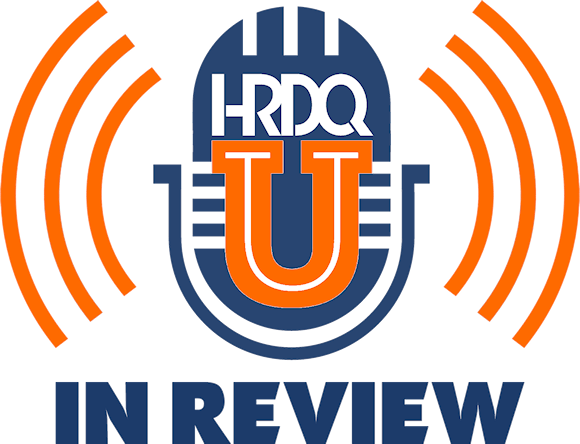
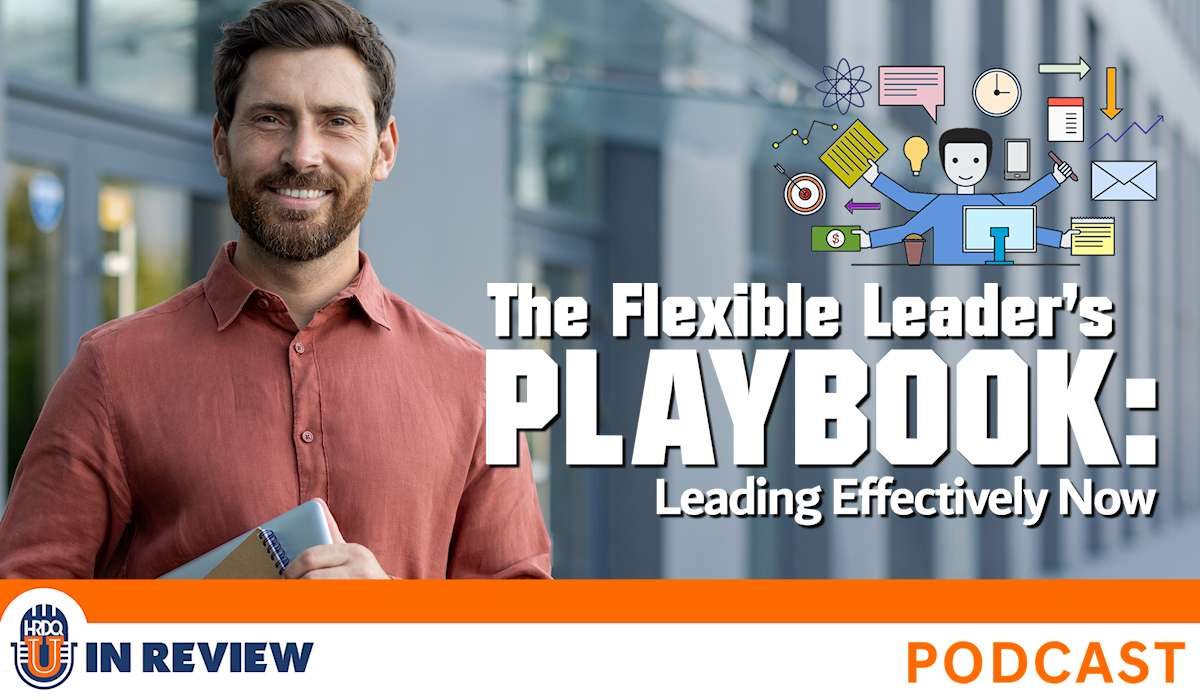
Sarah, Learning Events Manager at HRDQ, sits down with leadership expert Kevin Eikenberry to discuss key insights from the upcoming webinar, The Flexible Leader’s Playbook: Leading Effectively Now.
With over 30 years of experience working with leaders in 50+ countries, Kevin shares his perspective on AI’s impact on leadership, highlighting two extreme mindsets – those who see AI as revolutionary versus those who resist change – and advocates for a balanced approach.
He also introduces the Flexible Leadership Framework, emphasizing three core elements: intention, context, and flexors. Kevin explains why many leaders operate on autopilot and how developing a conscious leadership playbook can enhance adaptability and leadership growth in today’s fast-changing world.
Lastly, he identifies a critical gap in leadership growth – while training often focuses on skills, mindset, and habit formation are frequently overlooked. He explains why sustainable leadership growth requires all three.
Chapters:
⏱️ 00:01 – Kevin Eikenberry’s Leadership Background
⏱️ 02:12 – AI in L&D – Navigating the Extremes
⏱️ 06:23 – Why Leadership Playbooks Need an Update
⏱️ 12:10 – The Three Pillars of Flexible Leadership
⏱️ 15:04 – Bridging the Leadership Development Gap
Tune in for practical leadership insights and strategies to stay flexible and effective in today’s evolving workplace!
Resources and Links:
Order Kevin’s New Book – Flexible Leadership: Navigate Uncertainty and Lead with Confidence! Become a more flexible leader with a revolutionary approach to applying leadership skills, while staying true to your principles and values.
00:01
Welcome to this week’s episode of the HRDQ-U In Review podcast, where we bring you the latest insights and practical tools to enhance soft skills training in your organization. This podcast is brought to you by HRDQU.com, and I’m your host, Sarah, Learning Events Manager at HRDQ-U. Today, I have Kevin Eikenberry joining me to discuss the upcoming webinar, The Flexible Leaders Playbook: Leading Effectively Now. Kevin, thanks so much for joining me today. Sarah, I’m glad to be with you.
00:29
And Kevin, we have had the opportunity to work together many a times on webinars. I don’t believe you’ve been on the podcast before though. Is this your first time? Well, you’ve never invited me, Sarah. Well, I’m sorry. I’m happy that you’re here. So I’m glad we made that change. I’m glad to be here. Could you share a little bit about yourself and your work for our community so they can, you know, know a little bit about you? Sure. So my name is Kevin Eikenberry and I lead a company called Drumroll.
00:59
The Kevin Eikenberry group, we are a group of folks that are based in the United States. We’re spread out across the U.S. I’m based in Indianapolis, but we’re spread out across the U.S. And we are really, Sarah, in the leadership learning business. So we’ve had the good fortune over the last 30 plus years to work with leaders from over 50 countries. We spend most of our time doing all the kinds of things you think about in terms of leadership learning, whether that’s…
01:28
delivering training, whether that’s stuff that we’ve already created or that’s customized for an organization. I do keynotes. We do consulting around organizational culture and organizational change mostly, and leadership pipeline kinds of things. so coaching, training, consulting, speaking, that sort of, and I spend a lot of time writing, Sarah. So we are literally in the business.
01:56
of helping leaders make a bigger positive difference in the world. Great. Great. And could you then talk a little bit about what trends or changes that you see happening in the L &D space right now? Two letters. A, I, I suppose that’s, that’s, that’s obviously the thing. You know, if you went to ATD last year, that’s what you saw. Confident. We had a
02:26
We had someone on our team at a conference the other day, same thing. That’s clearly what we’re going to see at ATD here in a couple of months. And so that’s the trend in L &D. But let me just step back from that for a second and say that what I find, Sarah, is we’ve got people sort of in two camps here. One is the…
02:48
Awesome maximalist camp of this is going to be the best thing since sliced bread and We just got to you know, take advantage of it as quickly as we can and the other end of the spectrum are what we’ll call the ostriches which say well, it’s not nearly as big of a thing as you think or we’re just not going to get involved or we’re gonna take it super super super super slow and I would say
03:18
that the future lies somewhere in between those two things. And that we are doing our organizations a disservice by being on either end of that spectrum. In fact, that gets to an idea that we’re going to talk about, I’m confident later in this conversation. But to me, obviously, the biggest trend thing is AI. But the thing that I would say about that is as much as jobs will change, there’s all sorts of, know, people
03:48
predicting how much change that’s going to be and how quickly and all that stuff. Here’s what I would say. There’s a bunch of stuff that’s not going to change. And we could look at past changes in the world, in the world of work, in the world of L &D, and find that while people started out on both ends of the spectrum, the reality ended up being somewhere in the middle. And that’s what’s going to be the case here. And what we must keep our minds open. We must be looking. We must be looking for opportunities.
04:19
to use these new tools. And ultimately at the end of the day, one of the biggest things that isn’t changing is this, that people are still in organizations and the need for leaders who are…
04:33
better prepared, wiser, and I would believe more flexible, will be at a bigger premium than ever. Yeah, absolutely. I think that there’s some comfort then in your words there for maybe those that are a bit apprehensive. And Kevin, could you share a little bit about what projects or initiatives that the Ikenberry Group is currently working on? Well, the biggest thing that we’re working on right now is
05:01
everything related to this new book, Flexible Leadership, that I know we’re going to talk about. you know, we in the past, Sarah, have written books, at least in part based on training and other stuff we’d already done. And the book came after sort of learning events. And for Flexible Leadership, we’ve done that opposite, which is
05:29
We’re building the workshop and the learning experiences that will go to follow and to support the book rather than the other way around. And the other big thing that we’re spending a lot of time on with clients is what we internally call content creation because we’ve created so much content over the last 30 years that’s available in a variety of ways. But what we’re saying to clients is that we’ve got all these digital learning assets available and we’re packaging them for people to use in a variety of ways. And we’re super excited about that.
05:58
because we can bring all of our intellectual property to light in targeted ways for clients to meet their needs. And Kevin, we have your upcoming webinar on April 16th, the Flexible Leaders Playbook, Leading Effectively Now, and it’s going to cover essential leadership strategies. Could you share what are the key objectives of this session? What can folks expect to learn when they attend? Well, think they’re going to get, number one, they’re going to get a clear picture as to why
06:27
being a flexible leader is the right goal and what that means and what it doesn’t mean. And then we’re going to give you a playbook. if you, you, and I, I don’t like to use sports analogies very often because not everyone loves them, right? People either love them or they don’t. Uh, but if, but if you’re in most sports, there’s a playbook that says, here’s what we’re going to do when these situations occur or here’s, here’s what we’re going to prepare ourselves for in the future.
06:56
And so what I’m going to do on that webinar is give you a playbook, the framework for a playbook that you can then populate in a way that helps you be more effective as a leader or to help the leaders in your organization be more effective. So the webinar will really be, Sarah, you wearing two different hats. If you are a leader, you should be there. And if you are a person in your organization, which I’m sure many of you are that are focused on helping
07:26
leaders in your organization then you definitely want to be there as well. But chances are if you’re in that second group you’re also in that first group. So hopefully you come with both perspectives both the organizational one as well as the personal one. And if you have yet if you’re not subscribed to our newsletter make sure that you do that on HRDQ.com so that you can stay up to date with this upcoming event. We’ll be sending out information on how you can register and we’ll also have that linked below as well. But make sure that you subscribe to the newsletter.
07:55
So Kevin, what is wrong with the playbook leaders have now? Well, the biggest here’s the biggest thing that’s wrong with the playbook they have today. And that is that they basically don’t have one except one that is.
08:11
subconscious and automatic. In other words, most leaders attack every situation, approach every situation based on their automatic responses, their natural responses, their learned experiences, and perhaps training that they’ve taken that has labeled them to be this kind of leader or that kind of leader. So the problem is that we either don’t have a playbook or the one we have is so ingrained in us that we can’t
08:41
look at it well enough to say, is this really serving us or
08:47
Yes. And so you talk about flexibility a lot too. In general, think in many of your webinars, we always talk about being flexible, but specifically relating to leadership flexibility. Why is it important and why is it so hard? Well, I don’t want to go too far because I want everyone to come to the webinar, but I do want to say a little bit about that. And here’s the thing. First of all, let’s just do a little thought experiment.
09:13
If you’re listening to this, and again, you can think about this for yourself or for the leaders in your organization. We’ll just keep it first person for yourself for right now. Let’s just go back five years. So five years, or let’s go back five and a half years. So whenever you’re listening, that’s before the pandemic. Okay? And at that time, you were leading and trying to lead the best way that you possibly could.
09:41
You were doing what you knew, what you’d learned, from your learned experience, and you were leading in that way. Now, if you have continued to lead in that same way for the last five and a half years, what we know is true, that the world has changed a lot. And not even just the pandemic, but we could just take that one thing and say, well, that’s caused all sorts of ripples in how work happens, where work happens, when work happens, and more.
10:09
Right, so if we go back five and a half years, say this is how I led, and if I’ve stayed there consistently, has the world conspired to come closer to the way in which I lead? And the answer would be most assuredly no.
10:25
So you had good intentions in the past. We’re doing quote the best that you could. And that’s awesome. But if you’re not moving in a world that’s moving and in a world that’s more complicated, complex and uncertain than ever, then how can we possibly be more successful now if we’re not flexing in the face of all of those things? So that’s why flexibility is so important. And that’s
10:51
I think a pretty simple way to sort of prove to us all that even though we realize and value consistency, that at the end of the day, flexibility must reign. That we must be flexible in how we lead, even if we aren’t flexible in our values and our principles and those sorts of things. Like not everything about leadership has changed, but the things that are changing are really important.
11:20
And if we’re not aware of that, not thinking about it, don’t have tools to help us live in that new world, then we cannot be as successful as we want to be and as our organizations need us to be. Yeah. And I assume that’s a lot too, because people are creatures of habit and forcing yourself to step out of your comfort zone a bit. 100%. That’s the key. We live based on our habits and habits are wonderful when they’re helpful habits.
11:50
But what I would suggest to you that as a leader operating based solely on our habits without a playbook to help us alter those habits is not going to serve us very well. So what are the components of the flexible leadership approach? So there’s really three parts to the approach. And we’ve we’ve hinted at the first part a little bit, which is that number one, we have to have intention.
12:17
So, and if we’re operating on autopilot on our natural habits, then there’s not early any intention, right? So first thing is we have to be intentional to say, hey, I might need to flex. And the second thing is we have to think about the context of the situation that we’re in. Like, what does the situation tell me? And based on that, might I need to lead differently in that situation? So intention plus context.
12:47
Plus the third part is what we call flexors. And I think we’re gonna talk a little bit more about that before we’re done, but it’s those three things together. We must have intention to say, hey, I want to, or might in this case need to flex. I’m willing to. What’s the context? What’s the map? What’s the lay of the land? Tell me. how might, knowing that, might I make different choices? And then how do I make different choices? Flexors.
13:15
And so could you talk a little bit more in detail about flexors and what you mean by that? Yeah, I sure can. And I hinted at it earlier again when I said that in the world of AI, we got people on one end that are the maximalists and we got the ostriches on the other end. And what I said there was, and so we could call that a flexor. That is not one of the flexors that we will talk about in the book or that we’ll talk about in the webinar, but it’s a flexor because of a couple of points. Number one is there are
13:45
There are ends of the spectrum. And so a flexor has a continuum of thought or action. And the ends of the spectrum, the ends of the continuum are rarely the best answer. Right? And that’s what I said earlier about that. We’ll give you another example in a second. And so the mistake is that people don’t think of it as a flexor. They think of it as a choice.
14:13
I’m either here or I’m here. When the reality is, and you can see that if you think about the AI thing, that we’re somewhere in the middle. And so that’s what a flexor is. There’s a tension between the ends and both of them we need to understand. And our habit might have us nearer to one end of that spectrum or continuum than the other. But the flexor says, where should I be across that continuum based on my situation?
14:42
rather than based on my habit or based on what my style tells me I need to be. The playbook helps me adjust in real time based on those flexors. And what would you say is missing from most all leadership development efforts? What is the major problem?
15:04
Well, let me say one more thing about flexors first, and then I’ll answer that question and I’ll connect it together. So the other thing I’ll say about flexors is that in the webinar, we’ll talk about a number of them very specifically. I mean, I gave you the idea of it. And the idea of it is that we don’t live in a either or world, but a both and world. And how do we flex across that? I think the biggest thing that’s missing in leadership development training.
15:33
connected to that is that most leadership development training is focused almost entirely on skills.
15:44
And well, need to have people who need to skills, right? But there’s another piece to that that I believe has to come in front of that. That’s called mindset. Like the mindset has to match the skills. Like I can teach you a skill, but if you don’t believe in it, like it, see value or relevance in it, even if you can execute it, you’re not going to do it. Right? So
16:13
And I would say that some leadership development processes do talk about mindset as well as skill set. But the part that’s completely missing in almost every case is the third part, which is habit set. It’s how do we move people from having a toolkit, but not letting it get dusty or rusty because they’re actually using it. Some people would call this the knowing doing gap and too much
16:43
training, especially and including leadership development training, focuses on now you know what to do. Go forth and multiply, right? But the reality is that until we establish those new skills as habits and know when to apply them, the chances of us getting this even close to the maximum value out of those investments of time, talent, energy, etc. are
17:13
not going to be very high. So in short, the thing that’s missing most is that we’re not focusing nearly enough on helping people build the habit set that supports the new skill set that they’ve learned. Great. And we do have this as a reminder, April 16th, we will have this webinar with Kevin Eikenberry to go into further detail on all of what he’s shared today, get to learn more about those flexors.
17:43
So make sure that you click the link below so that you can register for that event. And Kevin, before I let you go today, where can listeners go to learn more about your work and connect with you? Well, I would say I’ll say three things. So first of all, thanks, Sarah, for having me. Number one, I’m looking forward to the webinar. So if you can spell my name, Kevin, E-I-K-E-N-B-E-R-R-Y, and put a dot com at the end of it, you can find us. In fact, if you can spell my name, you can find us pretty much anywhere, including
18:13
LinkedIn, I’d love to have you connect with me there. I always encourage people on webinars to do that. And again, kevinikenberry.com. But the thing I want to say now, because you’re getting a chance to hear this before the webinar, but right before the new book comes out. So I’ll tell you how you get the greatest value from the webinar is to get a copy of the book ahead of time. And so you can do that by going anywhere where you buy books, certainly. But you can also go to flexibleleadershipbook.com where you can get
18:42
insight into the book, a sample chapter of the book, and get some opportunities to buy multiples of the book and get some great benefits from buying in those bundles. So if you’re thinking about this for your leaders, if you found relevance in what we’ve talked about or are already intrigued, definitely go to flexibleleadershipbook.com and definitely sign up for the webinar when we’ll be together in April. Great. Yes. And we will have all of this information linked down below for you to easily access. Kevin, thank you so much for your time today. Thanks, Sarah.
19:12
We hope you enjoy listening to the HRDQ-U In Review podcast, available on all major streaming platforms. If you did enjoy today’s episode, make sure to give us a follow and leave us a five-star review. That’s how we’re able to continue to produce this weekly content for you. And also don’t forget to subscribe to our newsletter, where you can get access to all of our free information that we have out there, so you can register and sign up for webinars, including this one. Thank you all for tuning into this week’s episode of the HRDQ-U In Review podcast brought to you by HRDQU.com.

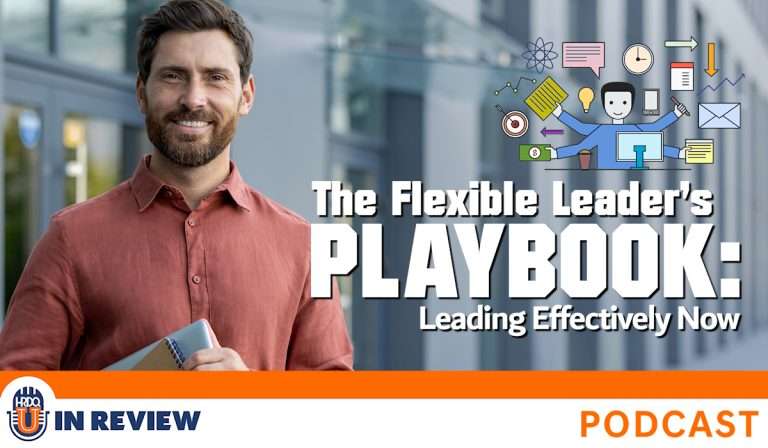
Listen to this podcast event at no charge with your
HRDQ-U Free Access Membership
Sarah, Learning Events Manager at HRDQ, sits down with leadership expert Kevin Eikenberry to discuss key insights from the upcoming webinar, The Flexible Leader’s Playbook: Leading Effectively Now.
With over 30 years of experience working with leaders in 50+ countries, Kevin shares his perspective on AI’s impact on leadership, highlighting two extreme mindsets – those who see AI as revolutionary versus those who resist change – and advocates for a balanced approach.
He also introduces the Flexible Leadership Framework, emphasizing three core elements: intention, context, and flexors. Kevin explains why many leaders operate on autopilot and how developing a conscious leadership playbook can enhance adaptability and leadership growth in today’s fast-changing world.
Lastly, he identifies a critical gap in leadership growth – while training often focuses on skills, mindset, and habit formation are frequently overlooked. He explains why sustainable leadership growth requires all three.
Chapters:
⏱️ 00:01 – Kevin Eikenberry’s Leadership Background
⏱️ 02:12 – AI in L&D – Navigating the Extremes
⏱️ 06:23 – Why Leadership Playbooks Need an Update
⏱️ 12:10 – The Three Pillars of Flexible Leadership
⏱️ 15:04 – Bridging the Leadership Development Gap
Tune in for practical leadership insights and strategies to stay flexible and effective in today’s evolving workplace!
Resources and Links:
Order Kevin’s New Book – Flexible Leadership: Navigate Uncertainty and Lead with Confidence! Become a more flexible leader with a revolutionary approach to applying leadership skills, while staying true to your principles and values.
[ PODCAST PLAYBACK ]
You must be signed-in with your membership account to access this content.
Enjoyed this podcast? Have suggestions on how we can improve? Please take our quick survey and receive a coupon for 15% OFF any of our individual membership plans.
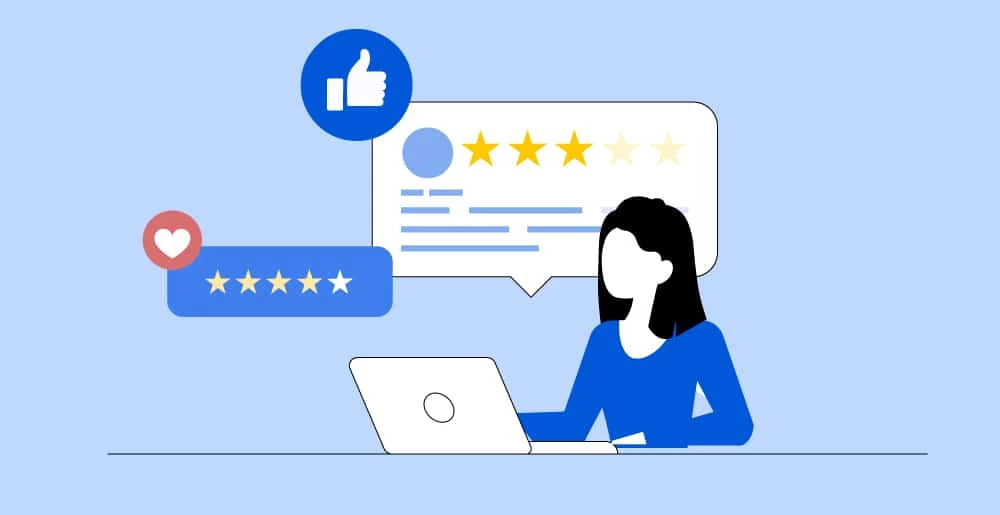
*Instant 15% coupon available upon completion of survey.
Want to learn more? Become an Individual or Corporate member to watch this and hundreds more webinars!
Transform your approach to management by utilizing the leadership playbook for practical insights and actionable strategies.
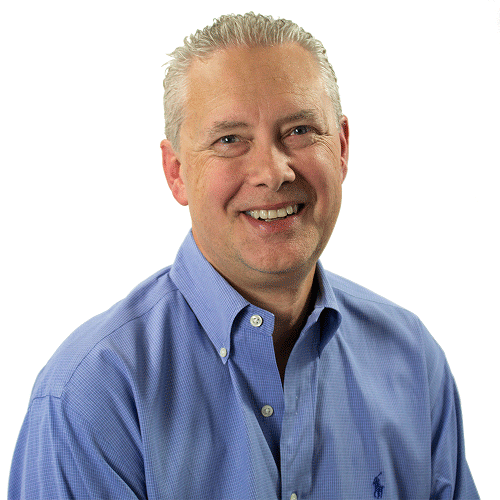
Kevin Eikenberry
Kevin Eikenberry is the Chief Potential Officer of The Kevin Eikenberry Group – a leadership and learning company based in Indianapolis, IN, with a team across the United States. He has spent over 30 years helping organizations and leaders from at least 53 countries become more effective. Global Gurus has listed him on the list of most influential thinkers on leadership for the last four years. His blog and podcast are among the most popular on leadership.
His books include Remarkable Leadership and From Bud to Boss, and The Long-Distance Leader, The Long-Distance Teammate, and The Long-Distance Team are among the books he has authored or co-authored. Kevin believes his new book, Flexible Leadership: Navigate Uncertainty and Lead with Confidence, is his best and most important work yet.

We are a leadership and learning company focused on helping organizations, teams, and their leaders reach their goals and make a bigger positive difference in the world.
Training Tools for Developing Great People Skills
This event is sponsored by HRDQ. For 45 years HRDQ has provided research-based, off-the-shelf soft-skills training resources for classroom, virtual, and online training. From assessments and workshops to experiential hands-on games, HRDQ helps organizations improve performance, increase job satisfaction, and more.
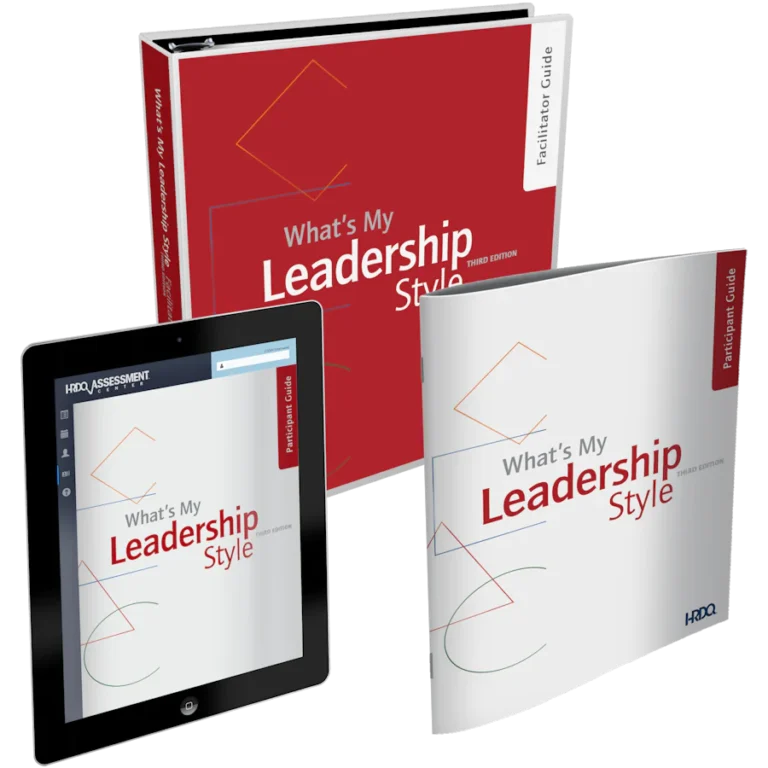
What's My Leadership Style
Discover how your influence impacts those around you, and develop the confidence, support, and direction needed for effective leadership. By recognizing this, you can leverage your strengths and address your weaknesses to become an exceptional leader.
Buy at HRDQstore.com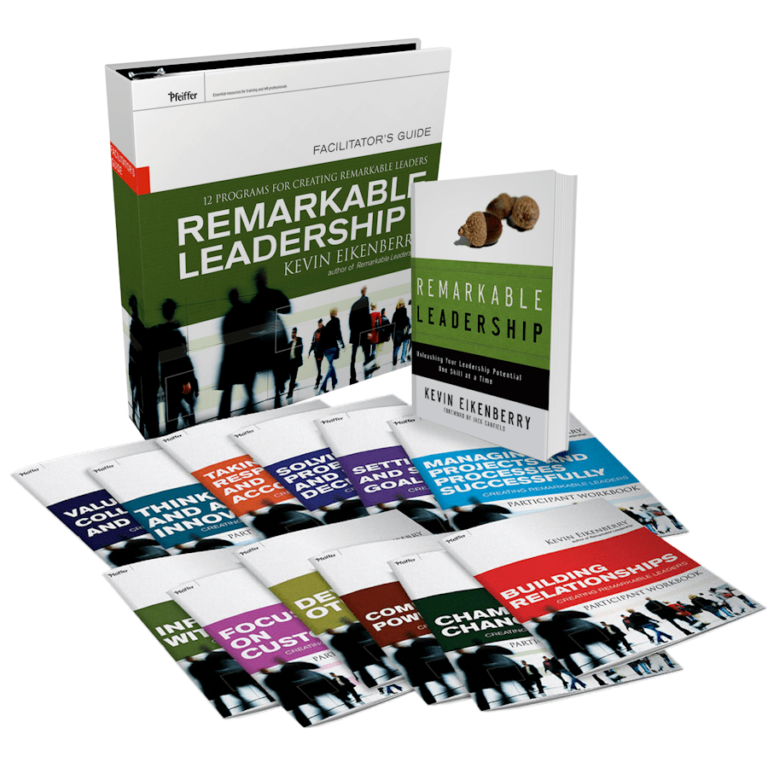
Remarkable Leadership
Explore a practical framework for developing and applying leadership skills. This approach focuses on key competencies and strategies for skill enhancement, tackling real-world issues such as maintaining focus, managing time limitations, and more in today’s fast-paced workplace.
Buy at HRDQstore.comThe HRDQ-U In Review Podcast, brought to you by HRDQU.com, brings you the latest insights and practical tools for enhancing soft-skills training in your organization. As a learning community for trainers, coaches, consultants, managers, and anyone passionate about performance improvement, we interview subject matter experts and thought leaders from recent webinars they presented with us to take a deeper dive into the content they shared and answer all your questions. Join us as we explore new ideas and industry trends, share success stories, and discuss challenges faced by professionals.
The HRDQ-U In Review Podcast is intended for HR and training professionals, organizational development practitioners, and anyone interested in improving workplace performance and productivity.
New episodes of HRDQ-U In Review are released every week.
The length of the episodes varies, but they typically range from 15-30 minutes.
The podcast covers a wide range of topics related to HR and organizational development, including leadership development, team building, communication skills, conflict resolution, employee engagement, and more.
No, HRDQ-U In Review is completely free to listen to.
You can listen to any available HRDQ-U In Review Podcast right on our website at HRDQU.com via our embedded Spotify player on the related webinar page. In addition to our self-hosted option, you can find the HRDQ-U In Review Podcast on many of the popular streaming services, which are listed above.